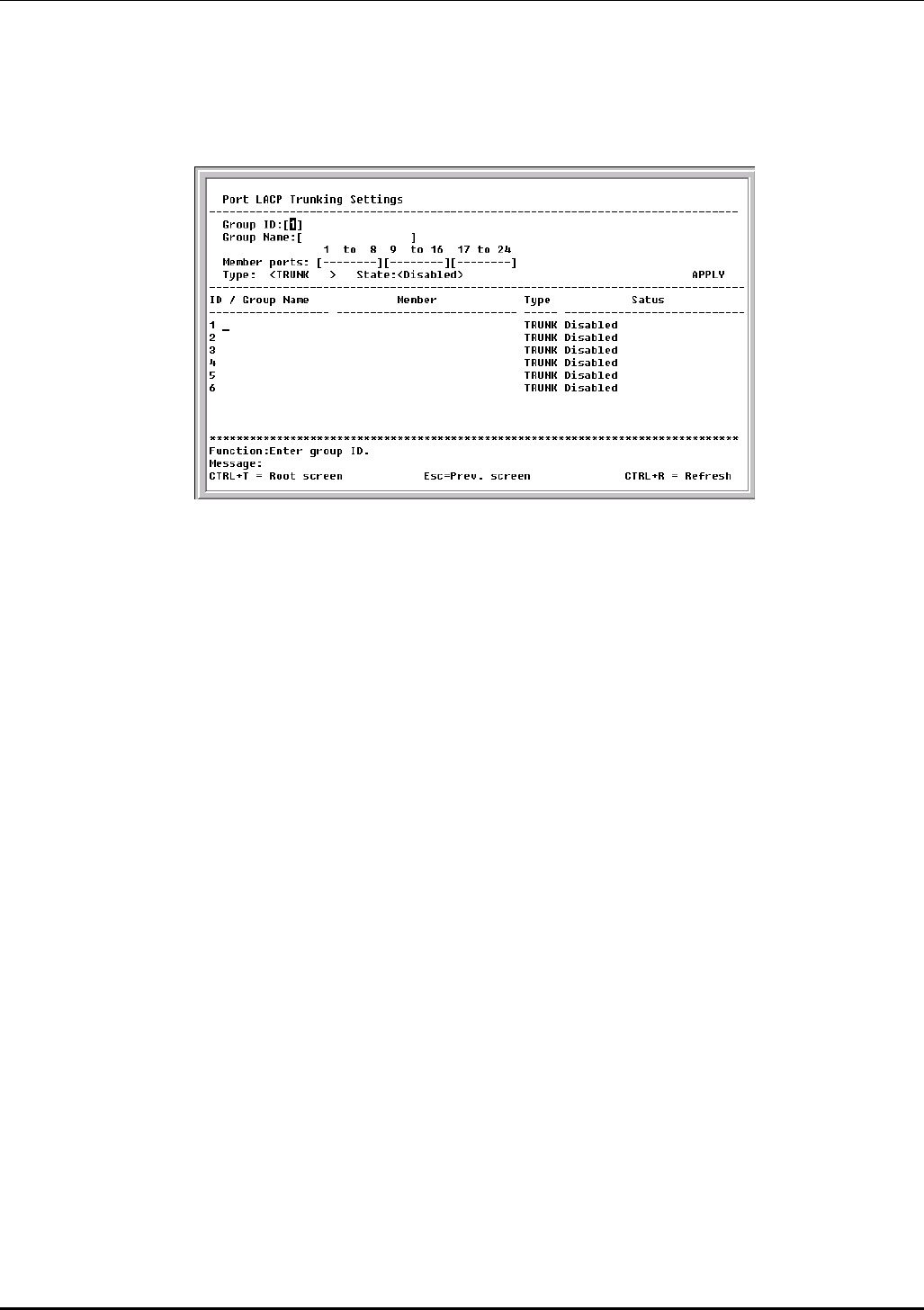
DES-3226 NWay Standalone Fast Ethernet Switch User’s Guide
Configure Port LACP Trunking
To configure a port trunking group, highlight Configure Port Trunking on the Configuration menu
and press Enter.
Figure 6-30. Port LACP Trunking Settings screen
Port trunking allows several ports to be grouped together and to act as a single link. This gives a
bandwidth that is a multiple of a single link’s bandwidth.
Port trunking is most commonly used to link a bandwidth intensive network device or devices – such as
a server – to the backbone of a network.
The Switch allows the creation of up to 6 port trunking groups, each group consisting of up to 8 links
(ports). The trunked ports can be non-continuous (that is, have non-sequential port numbers). All of
the ports in the group must be members of the same VLAN. Further, the trunked ports must all be of
the same speed and should be configured as full duplex.
The configuration of the lowest numbered port in the group becomes the configuration for all of the
ports in the port trunking group. This port is called the Master Port of the group, and all configuration
options – including the VLAN configuration – that can be applied to the Master Port are applied to the
entire port trunking group.
Load balancing is automatically applied to the ports in the trunked group, and a link failure within the
group causes the network traffic to be directed to the remaining links in the group.
The Spanning Tree Protocol will treat a port trunking group as a single link, on the switch level. On the
port level, the STP will use the port parameters of the Master Port in the calculation of port cost and in
determining the state of the port trunking group. If two redundant port trunking groups are configured
on the Switch, STP will block one entire group – in the same way STP will block a single port that has a
redundant link.
The Link Aggregate Control Protocol (LACP) allows you to bundle several physical ports together to form
one logical port. In contrast to traditional port trunking as explained above, LACP trunking requires
every member port to use the same protocol. If, for example, one member port on a switch does not
support LACP, then that port cannot be a member of the port trunking group.
The user-changeable parameters in the Switch are as follows:
• Group ID:[1] – This field is for a group ID number for the port trunking group.
61


















